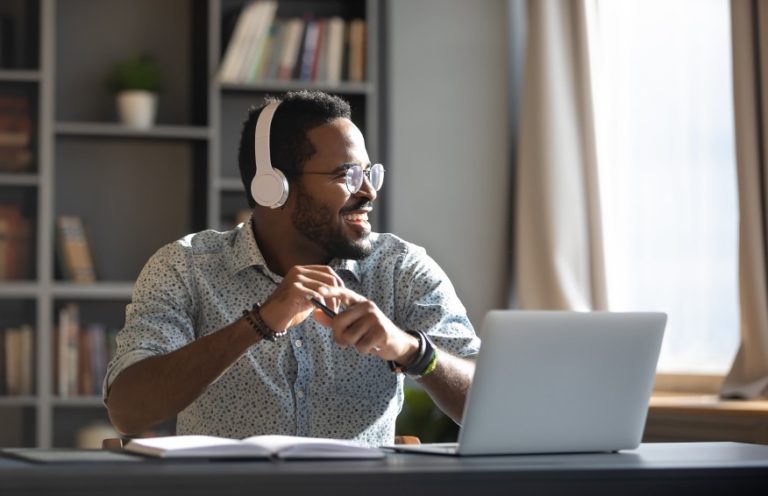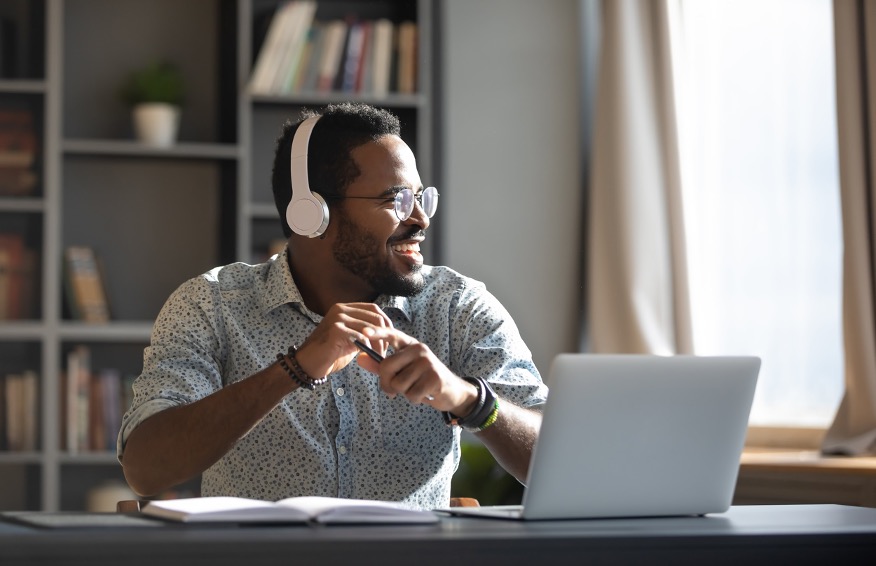The COVID-19 pandemic has posed many challenges for businesses. Brands had to overhaul their content strategies, cancel events and send everyone home. With live events going virtual and employees and thought leaders scattered all over the globe, audio content may once again reign supreme.
Over the last decade, podcasts have gone mainstream. What started as a niche media platform has transformed into an influential, and often necessary, means for communicating ideas and information. There is a podcast for everyone. Short episodes for those quick drives to the grocery store, a little longer to get you through your morning workout, or deep-dive discussions about a single topic to contemplate while you work from home.

B2B organizations working remotely can still produce meaningful content for their target audience. With some basic technology and some practice, podcasts give brands a unique opportunity to continue publishing content in a fully virtual work environment.
The State of Podcast in 2021, and Beyond
Podcasts have emerged as a premier content stream, and they are not going anywhere anytime soon. Just in the last year, Spotify has spent $500 million acquiring two podcast startups in order to integrate their technology with its music platform. That $500 million doesn’t not even include Spotify’s recent exclusive podcast contracts with Warner Brothers, DC Comics, Joe Rogan and Kim Kardashian to bring more exclusive content into its portfolio. This is a big deal. Remember when Howard Stern moved his entire show exclusively to XM Satellite Radio back in 2004? Spotify is making that deal look like child’s play. They are shaping the podcast industry to be a behemoth, and that is without the help of iTunes, Google or iHeartRadio, who have started to lock-in similar exclusive content.
Just in the last year, Spotify has spent $500 million acquiring two podcast startups in order to integrated their technology with its music platform. That $500 million doesn’t even include Spotify’s recent exclusive podcast contracts to bring more exclusive content into its portfolio. This is a big deal.
As we inch towards 2022, we are witnessing an explosion of podcast streams. There are currently over 2 million podcast channels, and data indicates that the demand is exceeding the supply. Ad revenue is increasing, daily consumption is up, more and more people listen to several podcasts on a weekly basis. There is still room for growth in this potentially $1billion dollar industry.
Everything You Need to Podcast is Right in Your Pocket
Many companies are taking their podcast production virtual by recording conference calls and adding some branded intro and outro music. This is a great way to make use of existing technology, but slow internet connections, compressed audio files and technology glitches all lead to poor audio quality. This can negatively impact subscribers. People are busy, and they have a lot of choices. If they have to work hard to listen to your content, they will not return.
With today’s technology, B2B brands no longer have an excuse for poor quality content. Viewers watching today’s videos expect it to be crisp and clear. Podcast listeners expect the same from their audio. The modern smartphone is the perfect device for bridging the gap between a professional podcast studio and a virtual work setting.
The Technical Details of Podcasting:
An easy way to leverage the smartphone is with a voice recording app. Apple’s iOS comes with ‘Voice Memos’ pre-installed, and for Android there are hundreds of free apps that allow you to record high-quality audio straight to your phone. The recording process is slightly more complicated than using a virtual conference platform, but the audio quality will impress your audience and keep them coming back for more.
Try these tips when recording your next podcast:
- Set up a conference call with the podcast participants using Zoom, Webex, Google Hangout, or choose your favorite
- Each participant will record themselves on their phone, while taking part in the virtual conversation. This will record each person’s voice separately, but with much higher fidelity
- The host or producers will then compile the individual audio files to create one, professional sounding episode
Download our Podcast Plan for a full guide of considerations for launching a podcast of your own.
Record Local, Publish Global
Recording a podcast in a sound-proof studio with professional microphones is the ideal way to produce a podcast, however that simply isn’t the reality producers are facing while working virtually. At PAN, we have created some guidelines that will have your podcasts sounding like it was recorded at Abbey Road.
We encourage all podcast participants to:
- Record in a comfortable space. Soft furnishings and carpets will act as a sound-deadener and absorb any background noise
- Reflective surfaces, such as high ceilings, large windows, or hardwood floors create small artifacts and echoes, which makes editing difficult. Microphones pick up a wider range of frequencies than the human ear. If you are in an office, this might mean moving away from windows to prevent the sound waves from bouncing
- Two to three guests is the perfect number of participants. Although a full panel of thought-leaders on a podcast sounds like a wonderful idea to every B2B marketer, it poses several production challenges. The slight delay from conference calls often leads people to talk over each other, creating confusion for the listeners
- Start with an outline, but don’t be afraid to let the conversation flow. Some of the most popular podcasts being published are free-flowing conversations between participants. The conversation can evolve as new topics are brought, making the conversation authentic and enjoyable
Half of all podcast listening is done at home, so now is the perfect time for B2B businesses to leverage this medium. Working virtually, with new content plans, gives businesses the perfect opportunity to give podcasting a try. Need another reason? Transcribe your audio content for blog posts, eBooks, emails and more. What’s better than getting multiple pieces of content from a single at home recording? It’s a marketer’s dream come true.
Need help getting your podcast off the ground virtually? We can help with that. Get in touch with us to find out how!



